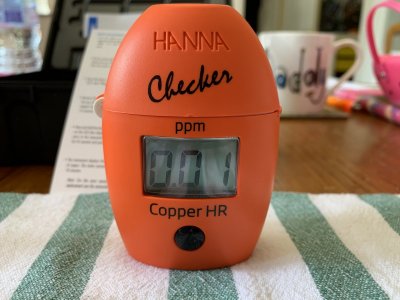I"m asking that question based off the fact that you stated keeping salinity at S=35 while dosing 2-part actually dilutes elements over time due to needing to correct back from increased salinity (S=36 diluting with fresh water back to S=35) over the course of a month of 2-part (or months further diluting). Sorry if I'm misunderstanding.It is a reason to maintain salinity.
This is important to me as I've recently had to correct for this exact issue with my salinity hitting S=40 and I ONLY dose Bionic 2-part. I just got everything back to S=36 (where I like it, stritcly by just pulling a couple cups of water out of the display a day and allowing the ATO to drip fresh to top off) and now you have me wondering if I should order an ICP test or just do a few water changes. Again, your time/knowledge is appreciated.

















